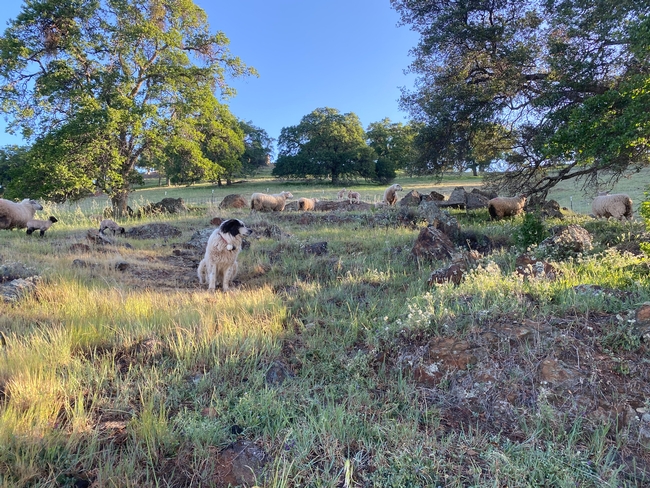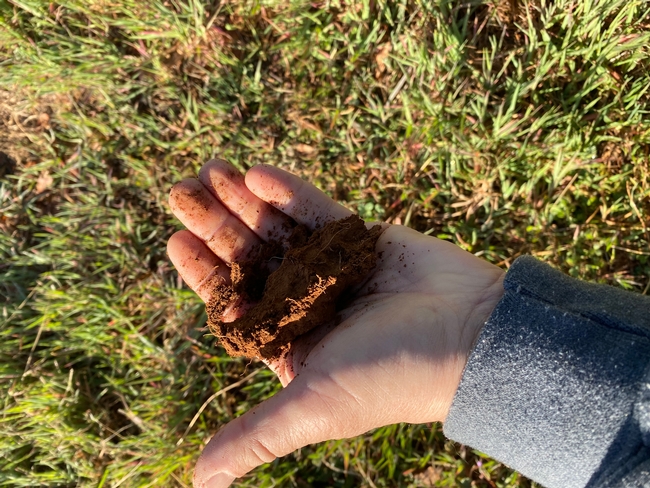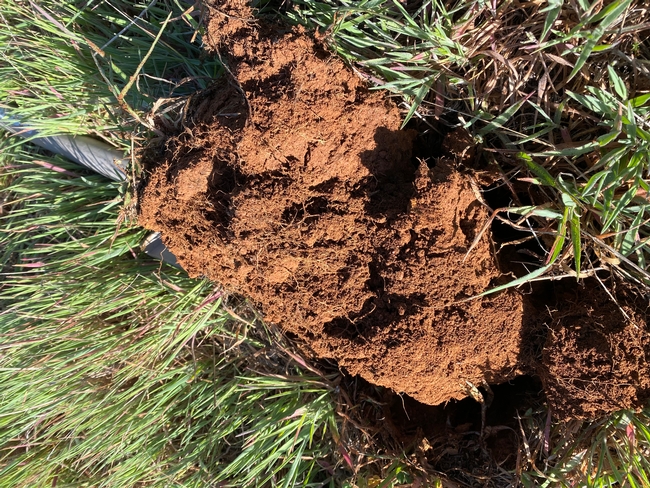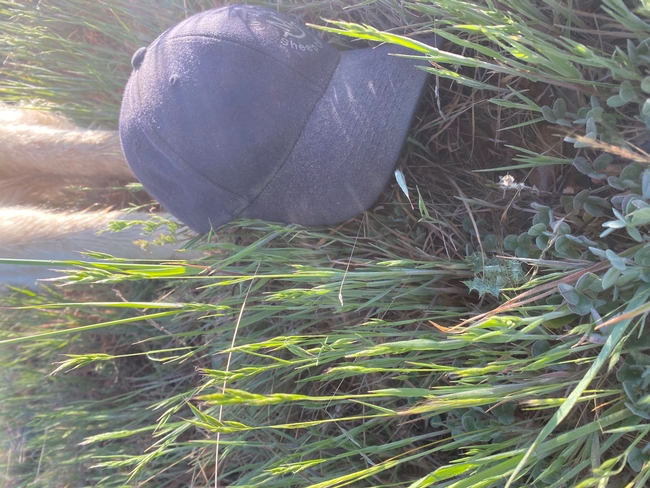I invite you to travel back in time with me - clear back to late October 2021! We'd measured more than 10 inches of rain in Auburn, and we could see the first green shoots of grass emerging through the dry forage. While November was slightly disappointing from a precipitation perspective, we measured more than 12 inches of rain in December - capped off by a crazy, wet, and cold storm just before the first of the year. I'm sure most of us were celebrating what looked like a great feed year when we rang in 2022. But then the spigot shut off - here in Auburn, we've measured just 1.77 inches of rain since January 1 - the driest start to the calendar year in the 20+ years I've kept records. Combining this lack of moisture with warmer-than-normal temperatures and unusual (at least for winter) dry north wind, we are squarely back in drought conditions. In many ways, we seem to be experiencing a more severe drought than last year, at least on our foothill annual rangelands.
Ranchers know that drought is more than just a lack of precipitation. Low rainfall years, provided the storms come at the right time, can produce above-average forage. This year, however, the warm temperatures have brought oaks and other vegetation out of dormancy earlier than normal - this early onset of the growing season in our oak woodlands has increasedevapotranspiration (or soil-water demand). The north winds haven't helped. Before we received an inch of rain on March 14-15, I checked soil moisture in Auburn - and found it to be less than 20% (more like May than March). The rain gave us a short boost, but by the end of last week, soil moisture was back around 25%.
Ourrangeland vegetation reflects these poor growing conditions. Our annual grasses andforbs, by definition, must produce seed every year. In dry conditions, this means that they reproduce and turn brown early and at a shorter stature. Where our sheep are grazing just west of Auburn, I've seen soft chess and annualryegrass headed out this week - a good 30 days early. In a good year, the soft chess will be as much as 18 inches tall; this year, it's done growing at 6 inches. Many of our importantbroadleaf forage plants are maturing equally early - I'm seeing vetch dying back on our shallower soils, and thefilaree is already in the late bloom stage, as well.
These are all red flags from a forage quantity perspective - shorter feed this spring means less residual feed to return to next fall. But early maturity also compresses our forage quality window. Many of us expect a 45-60 day period when we have high quality forage on our annual rangelands - and we set our production calendars accordingly. As these grasses and forbs mature, they decline in quality - providing less protein and energy to our grazing animals. They also become less palatable - in other words, they don't taste as good and they don't provide as much nutrition. The graph below demonstrates that crude protein levels in annual grasses drop below cow maintenance levels between the late flowering and maintenance stages (which we're approaching). If we're trying to put weight on animals, protein levels are deficient by the time we reach the early flowering stage. For more information, check out this ANR Publication (Annual Rangeland Forage Quality).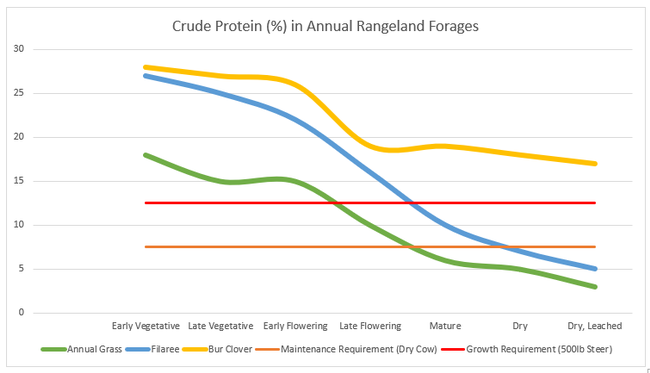
We're still hopeful that the significant snow pack we built up in December will mean we'll have adequate irrigation water here in the foothills - other regions in the state aren't so fortunate. Given the exceptionally dry conditions, however, I expect we'll need to make at least 2 irrigation rotations over our irrigated pastures to rebuild soil moisture and start growing forage. For us, this means we won't start regrowing irrigated pasture forage following our first graze periods until the end of May.
In light of these impacts, what are some of the strategies we should consider going forward? The basic premise of most drought management strategies is to increase our forage supply (by buying hay or other feed, irrigated early, or leasing new pasture) or reducing our forage demand (by selling livestock or weaning early). Check out our Drought Decision Making Tool for Ranchers for information on how to analyze the economics of these options! This page also includes a new bulletin on early weaning.
As far along as our annual rangeland vegetation is today, another rain won't do us much good - other than perhaps grow some summer annual weeds that may have some grazing value. Rain wouldgive our irrigated pastures a boost, however - at least here in the foothills. We'll see what April brings!
